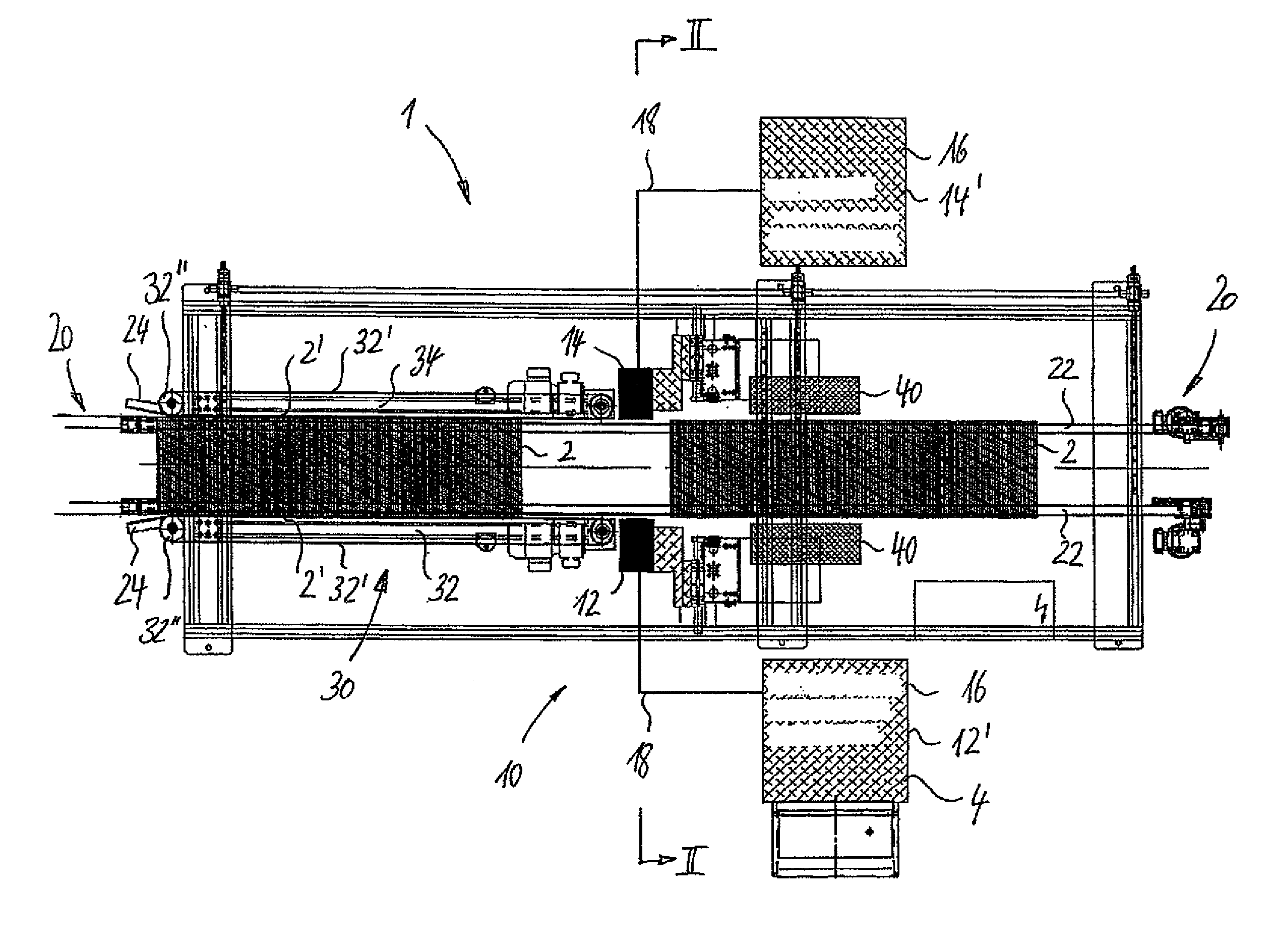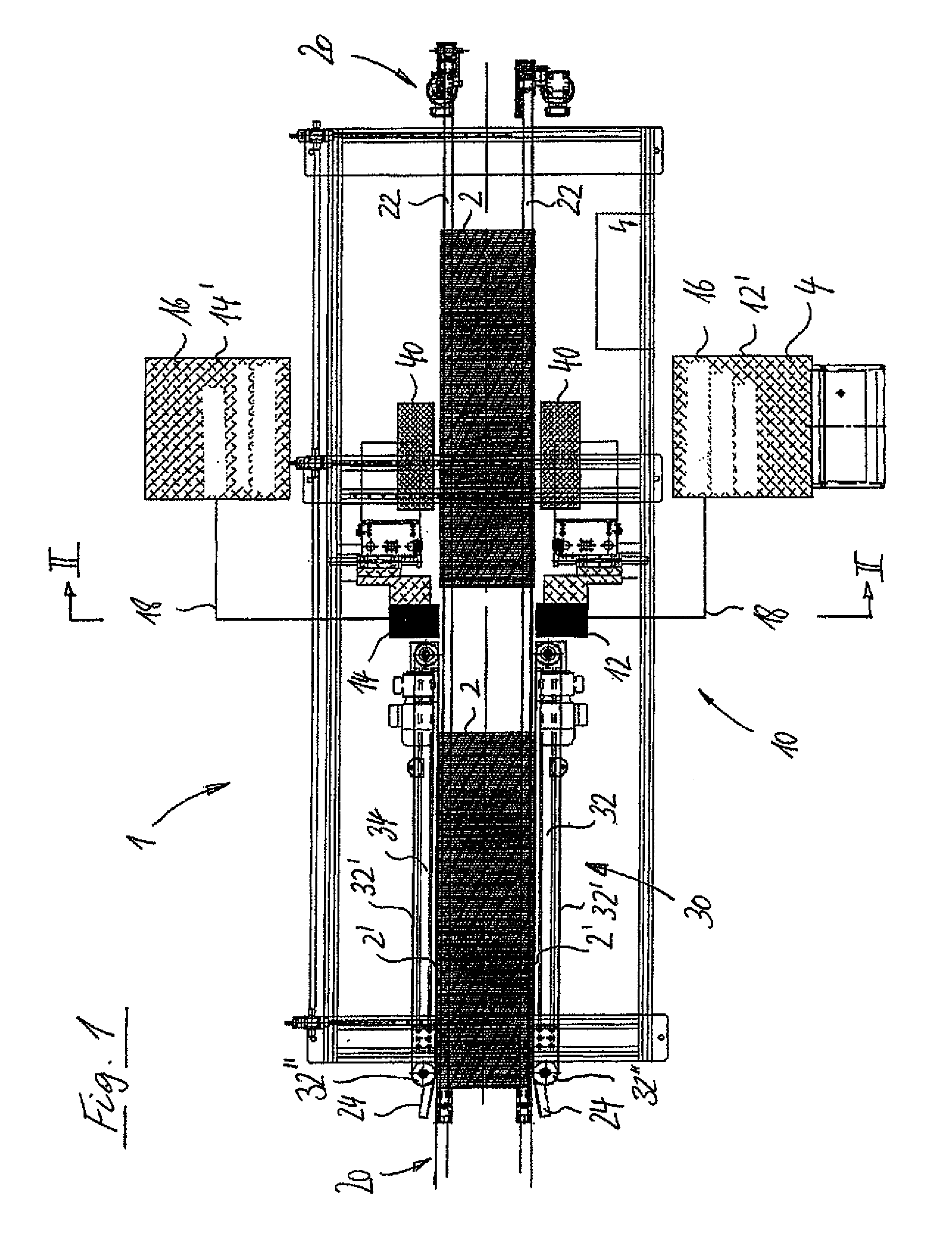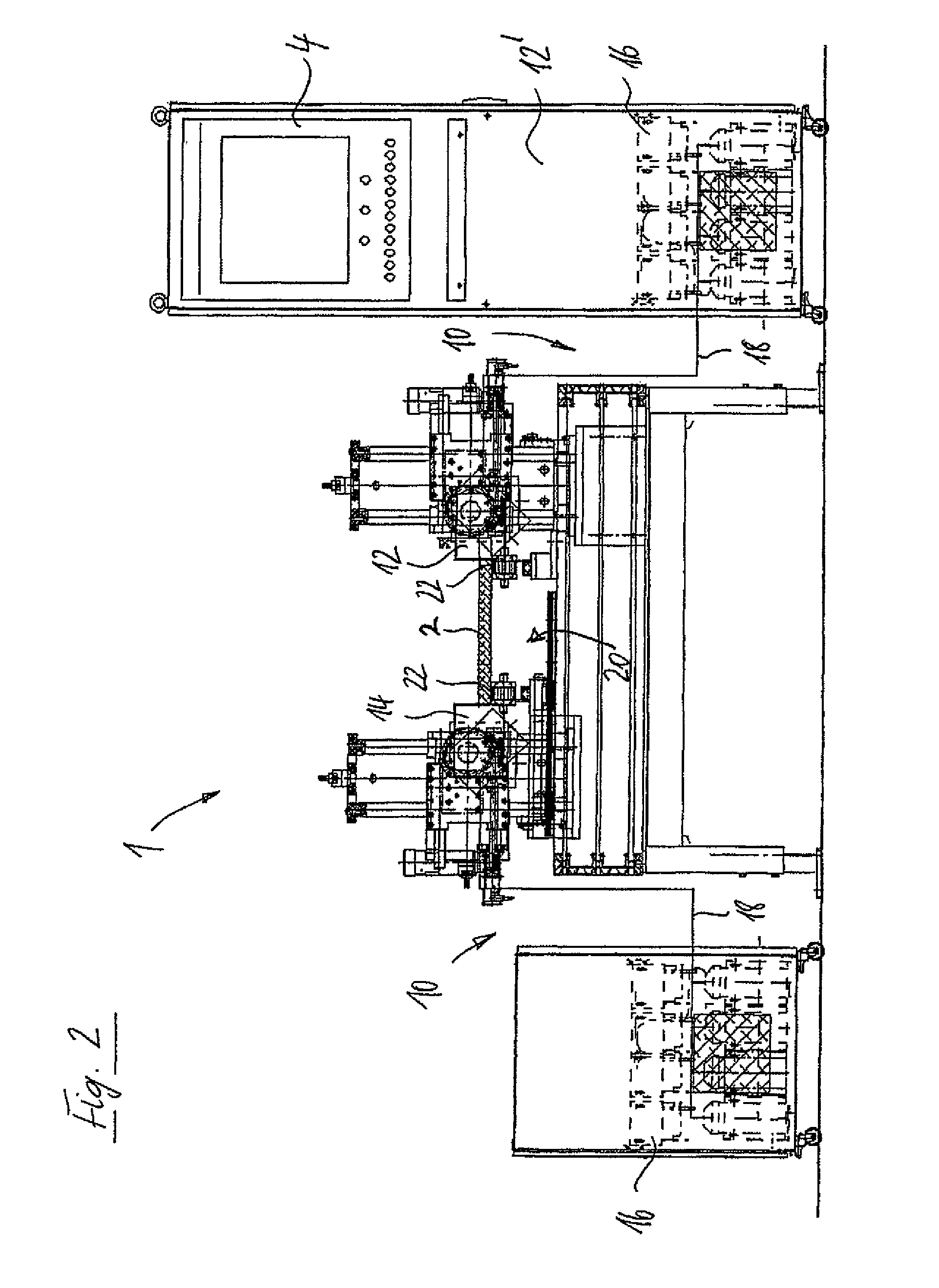Method for imprinting a three-dimensional article
a three-dimensional article and printing method technology, applied in printing, typewriters, etc., can solve the problems that the desired quality of printed images cannot be achieved in some cases, and achieve the effects of low wastage, low cost, and simple and precise manner
- Summary
- Abstract
- Description
- Claims
- Application Information
AI Technical Summary
Benefits of technology
Problems solved by technology
Method used
Image
Examples
Embodiment Construction
[0020]Preferred embodiments of the present invention will be described hereinafter in detail with reference to the accompanying drawings.
[0021]FIG. 1 is a schematic plan view and FIG. 2 a schematic sectional view of a device 1 for imprinting containers 2. The container 2 is in the present embodiment a cardboard comprising a filling opening which is located on top and was folded beforehand out of a cardboard blank. It should however be noted that the present invention is also applicable to completely different types of containers and also to completely different types of three-dimensional articles such as, for example, plate or strip-like workpieces such as are used in the field of the furniture industry and can often be made of wood, wood materials, plastics materials, etc. or combinations thereof.
[0022]The device 1 has in the present embodiment a printing means 10 comprising two printing units 12, 14 which are configured in the present embodiment as ink-jet print heads comprising a...
PUM
 Login to View More
Login to View More Abstract
Description
Claims
Application Information
 Login to View More
Login to View More - R&D
- Intellectual Property
- Life Sciences
- Materials
- Tech Scout
- Unparalleled Data Quality
- Higher Quality Content
- 60% Fewer Hallucinations
Browse by: Latest US Patents, China's latest patents, Technical Efficacy Thesaurus, Application Domain, Technology Topic, Popular Technical Reports.
© 2025 PatSnap. All rights reserved.Legal|Privacy policy|Modern Slavery Act Transparency Statement|Sitemap|About US| Contact US: help@patsnap.com



